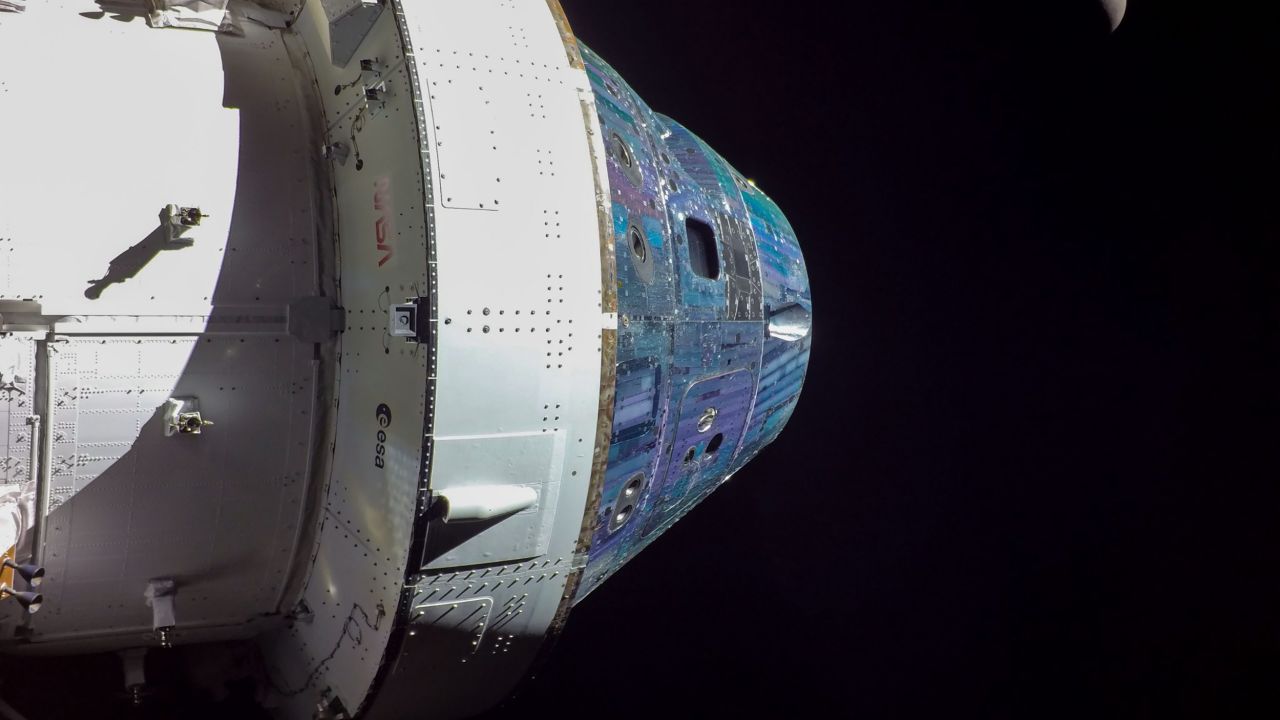(CNN) — NASA released a selfie and close-up photos of the moon’s crater-scarred landscape taken by the Orion capsule during its 25 1/2-day journey as the Artemis 1 spacecraft traveled more than 40,000 miles. There on the other side of the moon.
Orion’s latest selfie, taken on Wednesday, the eighth day of the mission, shows angles of the spacecraft through a camera on one of the capsule’s solar panels, with part of the moon in the background. The close-up photos were taken on Monday as Orion made its closest approach to the moon, passing about 80 miles (129 kilometers) from the lunar surface.

Orion takes a selfie with the moon in the background with a camera mounted on one of its solar panels.
If Orion makes its journey past the moon and back to Earth, it will be the farthest a human-carrying spacecraft has ever traveled. For now, the capsule contains only inanimate science payloads.
Orion is part of NASA’s Artemis program, which aims to eventually establish a lunar outpost that could permanently house astronauts for the first time in history, with the hope of one day setting a path to Mars.
The Artemis I mission launched on November 16, when NASA’s long-delayed Space Launch System, or SLS, rocket launched the Orion capsule into space, confirming the rocket as the most powerful operational launch vehicle ever built.
As of Thursday afternoon, the capsule had traveled 222,993 miles (358,972 kilometers) from Earth and 55,819 miles (89,831 kilometers) from the Moon, traveling at a speed of 2,600 miles per hour, NASA said.

On the sixth day of the Artemis I mission, the Orion Optical Navigation Camera captured black-and-white images of craters on the moon.
Orion is now about a day away from entering a “distant retrograde orbit” around our nearest neighbor: distant because it is so high above the lunar surface, and retrograde because it orbits the Moon in the opposite direction. From where a natural satellite travels around the Earth.
As NASA’s Artemis mission manager Michael Sarafin said last week, the trajectory is to “stress test” the Orion capsule.
According to NASA’s Artemis blog, the agency’s telecast of the Far Retrograde Orbiter Insertion Burn is scheduled for Friday at 4:30 PM ET and the burn is scheduled for 4:52 PM ET.
After capturing the moon, the Orion capsule is expected to return to Earth and make a soft landing in the Pacific Ocean on December 11.
CNN’s Jackie Wattles contributed to this report.





:quality(85)/cloudfront-us-east-1.images.arcpublishing.com/infobae/KTKFKR763RBZ5BDQZJ36S5QUHM.jpg)